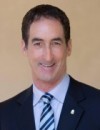By Robert Rauch
When forecasting what will occur in a given year, I often quote lots of others, which reduces the risk I am taking as a sole prognosticator. Yet having now been around the industry exactly 45 years, I am going to create some predictions of my own.
2019 is the year where supply and demand come in balance, with about two percent growth for each. That means occupancy levels will be flat in the U.S. – though certain markets have some supply growth well beyond that and might see occupancy reductions. Let’s begin with the economy, and then move into lodging industry projections.
U.S. Economy Stock market volatility won’t go away with too much political divisiveness and trade war rumors going around. Interest rates will likely stay where they are in an attempt to avoid or stave off a recession. China’s economy is suspect and the international wind is certainly not at our back anymore. But there is no current indication, in my opinion, that we will have a recession this year. Fundamentals are at historic highs and default rates are at historic lows.
Consumer confidence remains strong, purchasing managers are showing continued growth, jobs and wages are growing and there is no “bubble” in the market that is hanging over us. Yes, there are pundits that predict recession. But we are far more likely to experience a recession caused by external factors such as war, terrorism or an “event” than a deterioration of fundamentals. Supply growth is not a problem as lenders and construction costs are keeping that in check. Most indicators suggest the current expansion cycle still has some legs. Stay tuned for changes to the macroeconomic environment but gross domestic product growth will likely be above two percent.
U.S. Lodging As occupancy remains flat, average rates should continue to grow albeit slowly. This is not a result of weak occupancies, rather, it is a combination of rate transparency, competition from alternative accommodations such as vacation rentals, Airbnb and others and hesitancy on the part of revenue managers. When revenues rise only two percent, my estimate of rate growth this year, trouble is ahead on profit margins. A tight labor market, minimum wage increases and other cost increases will put real pressure on profits.
Based on some recession risk and clear profit pressures, owners will benefit from early planning in the event of softening demand. Revenue managers must maintain rates as pricing power shifts to the consumer. Opaque distribution channels can be leveraged here and bundling of air, car and hotel room can mask rate cuts. The power of large brands today has put online travel agencies on notice that they do not own the market. However, there has been a significant addition of alternative accommodations and this could lead to greater use of those channels—both due to more “hosts” needing to supplement income and hence more supply of less expensive product.
How we as operators react to any downturn will determine how we do. Perceived value will become even more critical for guests and loyalty strategies will possibly create more Loyalty Managers as a job title. It has become paramount to a hotel’s success to have attributes that today’s guests desire. Amenities, service quality and a sincere desire to please guests will not go unnoticed. The wellness market is growing and the new brands entering the market are not your father’s Hilton, Marriott or IHG product, so to speak.
Loyalty Kalibri Labs (KL) has studied the loyalty and book direct programs in our industry in detail with a highly valid and statistically reliable 19,000 hotels. According to KL, “the loyalty member campaigns have either strengthened or stabilized the growth rate of bookings through Brand.com while the OTA channel has either held steady or has somewhat decelerated. Both online channels are growing, but Brand.com is growing at a stable rate or faster maintaining the current position across the U.S. industry where Brand.com generates 50% more bookings on average to U.S. hotels than the OTA channel.”
Further, “loyalty member rates through Brand.com deliver a 9 percent premium to OTA bookings across U.S. hotels in terms of ADR net of booking costs.” KL also accounted for pay per click campaigns and other advertising to determine the net benefit to hotels. Additionally, the purpose of the brand campaigns to grow a hotel’s loyalty base have been achieved, according to KL as the current average base of loyalty contribution is between 40-60 percent and is growing faster than before these campaigns were introduced.
Specific Markets Our home market is San Diego which finished with 4th quarter RevPar growth of 12.4 percent, highest in the nation, followed by Boston at 12.2 percent and Norfolk at 10.4 percent. Atlanta, Denver, Miami, Orlando and Washington, D.C. had negative 4th quarter RevPar growth while Houston, also negative, was impacted with Hurricane comps. The full year ended with Philadelphia, Miami and Minneapolis leading the way with over 6 percent RevPar growth, San Diego and Phoenix over 5 percent RevPar growth and San Francisco at over 4 percent. Anaheim was over 3 percent and Los Angeles at just under 2 percent RevPar growth. Those in the negative growth category included Washington, D.C. and St. Louis. Houston was negative but again, they were severely impacted by Hurricane comps.
While growth trajectory does not always indicate future results, supply growth coupled with weak demand growth can present challenges and demand growth with limited supply growth can present opportunities. Good luck in 2019 and to our Chinese friends, Shen Yun Kwai La, Kung Shi Fat Thai! Happy New Year and may you prosper (loosely translated)!


